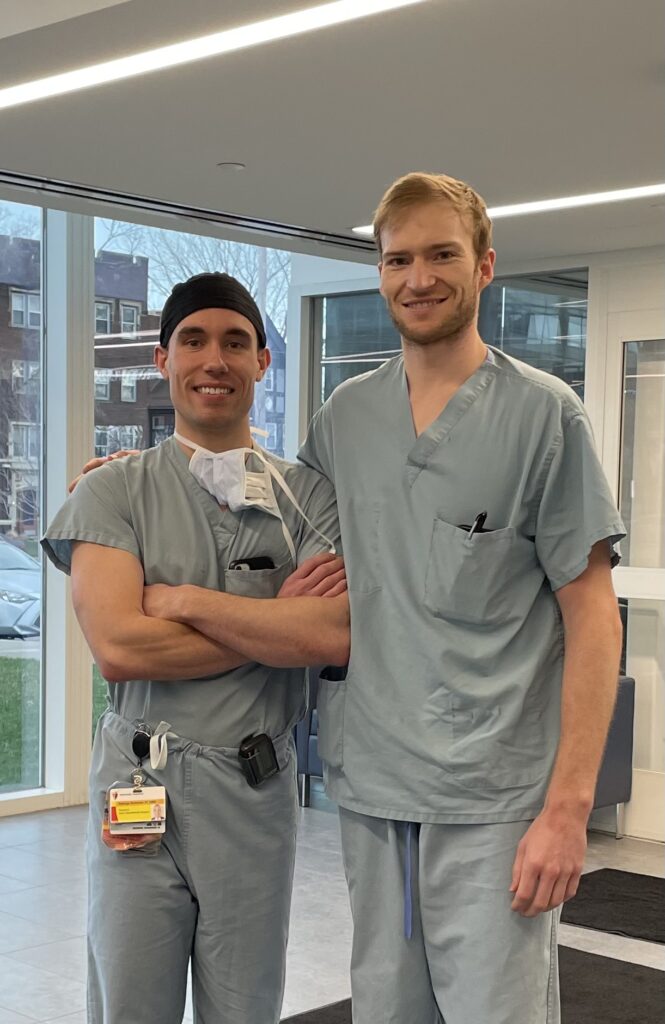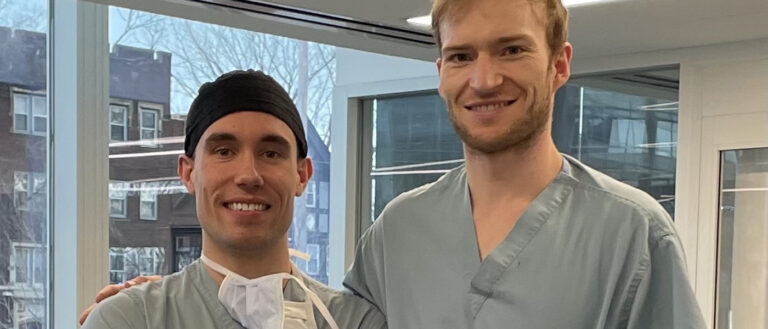When Case Western Reserve University School of Dental Medicine’s Dental Clinic opened March 10, it was an ordinary day: Patients checked in for their appointments while students and residents attended to their duties and provided care.
But at 3 p.m., that all changed. In the first floor waiting area of the Advanced Education in General Dentistry (AEGD) clinic, a 59-year-old male patient suddenly—and quietly—slumped in his chair. First-year oral and maxillofacial surgery (OMFS) resident and first-year medical student, George Schieder noticed the posture of the patient and leapt into action, easing the unresponsive patient gently onto the floor.

“I didn’t feel a pulse,” said Schieder, “but my heart was pounding so hard that I had Kyle confirm it for me.”
Third-year OMFS resident and fourth-year medical student Kyle Baird observed the situation and instructed Schieder to retrieve the automated external defibrillator (AED), a device used as a treatment for life-threatening cardiac dysrhythmias, specifically ventricular fibrillation and non-perfusing ventricular tachycardia. A defibrillator delivers a dose of electric current to the heart, a shock necessary for this patient as he had no detectable pulse.
At the School of Dental Medicine, all clinical students, residents, faculty and staff complete basic life support (CPR) training every two years—a process that familiarizes them with using an AED.
Baird began administering CPR. Schieder then returned with the AED and ventilated the patient with a bag-valve-mask—essentially breathing for him while Baird continued the chest compressions in an effort to restart the patient’s heart. It was then that Sandra Beauclair, an oral surgery nurse manager, arrived at the scene and confirmed an emergency squad was on its way.
As Dale Baur, professor and chair of the Department of Oral and Maxillofacial Surgery and vice dean of the School of Dental Medicine, reached the waiting room, he saw the residents and nurse manager had the situation under control.
“I was incredibly proud of them,” said Baur. “They were all very cool and calm. … All of our hard work and training had paid off at that moment.”
Schieder then applied the pads to the patient’s chest and only one shock was given, enough to restart the patient’s heart, keeping him stable while the team waited for the Cleveland city fire department and EMS to arrive.
The first responders revived and stabilized the patient, before transporting him to the intensive care unit at University Hospitals, where he was treated over that weekend. The patient is now at home, doing well and is very grateful for the valiant efforts from the school’s students and staff.
“In OMFS, we do a lot of things that make us proud,” said Schieder. “But saving someone’s life definitely tops them all.”
Each building at Case Western Reserve University is equipped with at least one AED, located in wall-mounted cabinets with visible wall signage alongside Stop the Bleed kits. Case Western Reserve University’s student-run Emergency Medical Service (CWRU EMS) offers trainings for students, faculty and staff to prepare the campus community for immediate response. To participate in upcoming Stop the Bleed, CPR, AED, and first aid training opportunities with CWRU EMS, email cwruems-exops@case.edu.

